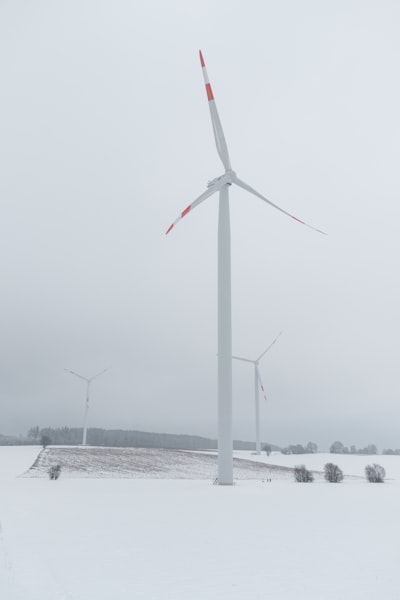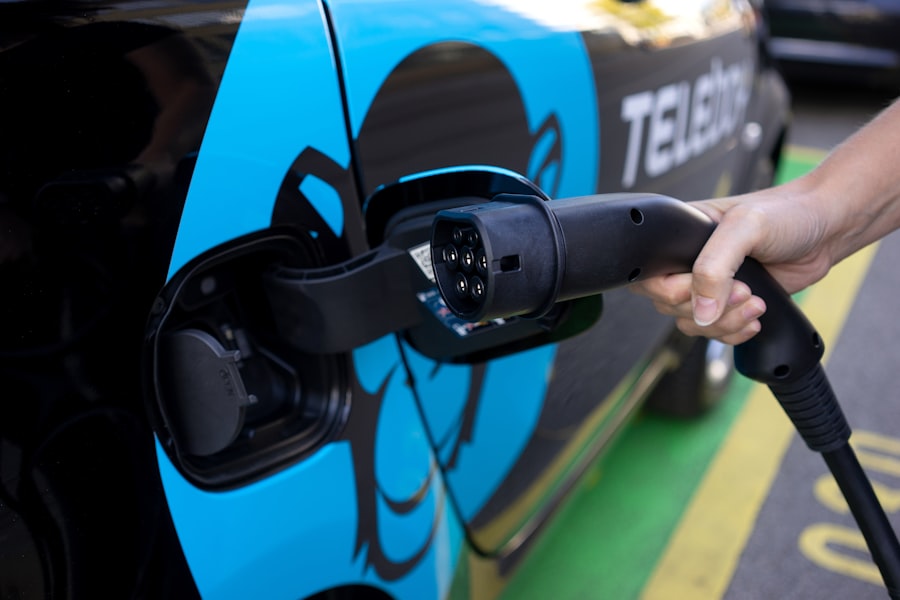![A primer on Green Hydrogen in Europe [2022]](https://images.unsplash.com/photo-1532601224476-15c79f2f7a51?ixlib=rb-4.0.3&ixid=MnwxMjA3fDB8MHxwaG90by1wYWdlfHx8fGVufDB8fHx8&auto=format&fit=crop&w=2070&q=80)
A primer on Green Hydrogen in Europe [2022]
In this article, we are describing why green hydrogen is essential for Europe – and we are giving plenty of background information.
Why is green hydrogen important?
Green hydrogen is an essential tool for achieving a sustainable and carbon–free future. It is created through the electrolysis of water, and the process produces no carbon emissions. This is a major benefit compared to the production of hydrogen through traditional methods, which rely on natural gas and produce carbon dioxide. By investing in green hydrogen technologies, we can reduce our dependence on non–renewable energy sources and create a more sustainable and clean energy future. Green hydrogen can also be used as a storage medium for renewable energy, allowing us to make use of the intermittent nature of renewable sources like solar and wind. This can help to make more efficient use of renewable energy resources and reduce our reliance on fossil fuels.
What is the exact hydrogen production process?
Hydrogen is produced through a process called electrolysis, which involves passing an electrical current through water. During this process, the water molecules are broken down into hydrogen and oxygen. Specialized machines called electrolyzers are necessary to carry out this process. Electrolyzers use electricity to split the water molecules into hydrogen and oxygen gases, which are then stored in tanks or compressed into liquid form.
In which industries is hydrogen used?
Hydrogen is used in many industries, including:
- Energy: Hydrogen is used to generate power through fuel cells, which can be used to power cars, buildings, and other applications.
- Chemical: Hydrogen is used in the production of chemicals, such as ammonia and methanol.
- Pharmaceutical: Hydrogen is used in the production of drugs and other pharmaceuticals.
- Food: Hydrogen is used in food processing, such as hydrogenation of oils and fats.
- Metallurgy: Hydrogen is used in metal refining and welding.
- Automotive: Hydrogen is used in fuel cells to power cars.
- Aerospace: Hydrogen is used as a fuel source in some rockets and aircraft.
What are the main challenges for the introduction of European green hydrogen?
- Cost: Currently, green hydrogen is still more expensive than gray hydrogen due to the higher cost of renewable energy and electrolysis. However, this could have changed through skyrocketing gas and electricity prices in 2023.
- Infrastructure: Developing the necessary infrastructure to transport, store and distribute green hydrogen is complex and costly.
- Regulatory framework: Clear policies and regulations need to be established to incentivize the use of green hydrogen and to ensure its integration into existing markets.
- Public acceptance: There is a need to increase public awareness and acceptance of green hydrogen, as well as its potential benefits.
- Technology: The development of efficient and cost–effective technologies to produce, store, transport, and use green hydrogen is still in its early stages.
Current green hydrogen projects in Europe
In the following paragraph, we are highlighting multiple green hydrogen projects in Europe.
Iberdrola and the Port of Rotterdam Partner to Establish Supply Chain for Green Hydrogen
Iberdrola and the Port of Rotterdam are collaborating to establish a supply chain for importing and distributing green hydrogen and its derivatives to meet the expected demand in the Netherlands and Northwest Europe. The memorandum of understanding includes the potential development of a local electrolyser in the Rotterdam Industrial Cluster, which would enable additional production of green hydrogen. Iberdrola has identified the Netherlands as a key market for the green hydrogen economy since it is Europe’s second largest consumer of hydrogen after Germany. The Port of Rotterdam is aiming to supply up to 4.6m tonnes of green hydrogen to the region annually by 2030.
Repsol, Naturgy, and Reganosa Team Up for Renewable Hydrogen Production Centre in Galicia
Repsol, together with energy companies Naturgy and Reganosa are gearing up to establish a facility that will generate renewable hydrogen in Galicia. The project will part of the former Meirama thermal power plant located in Cerceda, featuring an electrolysis plant solely powered by renewable energy. The facility has an initial capacity of 30MW and is capable of being further increased to a total potential of 200MW. When in full swing, the plant will be able to produce upwards of 30,000 tonnes of renewable hydrogen per annum. The renewable hydrogen produced here is intended to replace the traditional hydrogen used at the Repsol refinery in A Coruna, as well as supplying other sectors, including transportation and the gas grid. This is crucial in a bid to significantly reduce local carbon footprints. Tomas Malango, Repsol’s Hydrogen Director, said to highlight the significance of the project: „It provides an important foundation for the transformation of the A Coruna refinery into a multienergy hub that supplies society with decarbonized products.” Likewise, Silvia Sanjoaquin, Director of New Business of Naturgy, notes how the venture will not just help to meet the target of becoming carbon neutral, but also boost the regional economy. This project is another step towards Repsol’s goal of achieving zero net emissions by 2050, as well as freeing up the national energy supply.
Tree Energy Solutions and EWE Join Forces to Create 1GW Green Hydrogen Hub in Wilhelmshaven
Tree Energy Solutions and EWE have just announced an agreement to install and operate a 500MW electrolyser in TES‚ green energy hub in Wilhelmshaven, Germany. Deployment is scheduled to begin in 2028 and a second unit of the same size is slated to join the hub, resulting in a total capacity of 1GW. This hub is positioned to attract untapped renewable energy, such as offshore wind, to generate green hydrogen for national consumption. The two companies stated that the Memorandum of Understanding marks the substantial strides being made towards Wilhelmshaven becoming an intersection for green energy movements within Europe and their respective goals of providing affordable energy. „Helping to transform Wilhelmshaven into an energy hub is in line with our efforts to transcend from fossil fuels and transition to a sustainable energy future,“ said Marco Alvera‚, CEO of Tree Energy Solutions. Dr Urban Keussen, CTO of EWE, expressed that „without hydrogen for energy transition, climate neutrality, and a transition from fossil fuels will not be possible.“ He further bolstered the significance of Wilhelmshaven as an „energy hub,“ and the intent of the collaboration to develop a green hydrogen market and contribute relevant expertise.
Further articles about hydrogen in Europe
Exploring Opportunities for Hydrogen Production in the North Sea
European Commission Approves Funding for Groundbreaking Green Hydrogen Station in Cyprus






